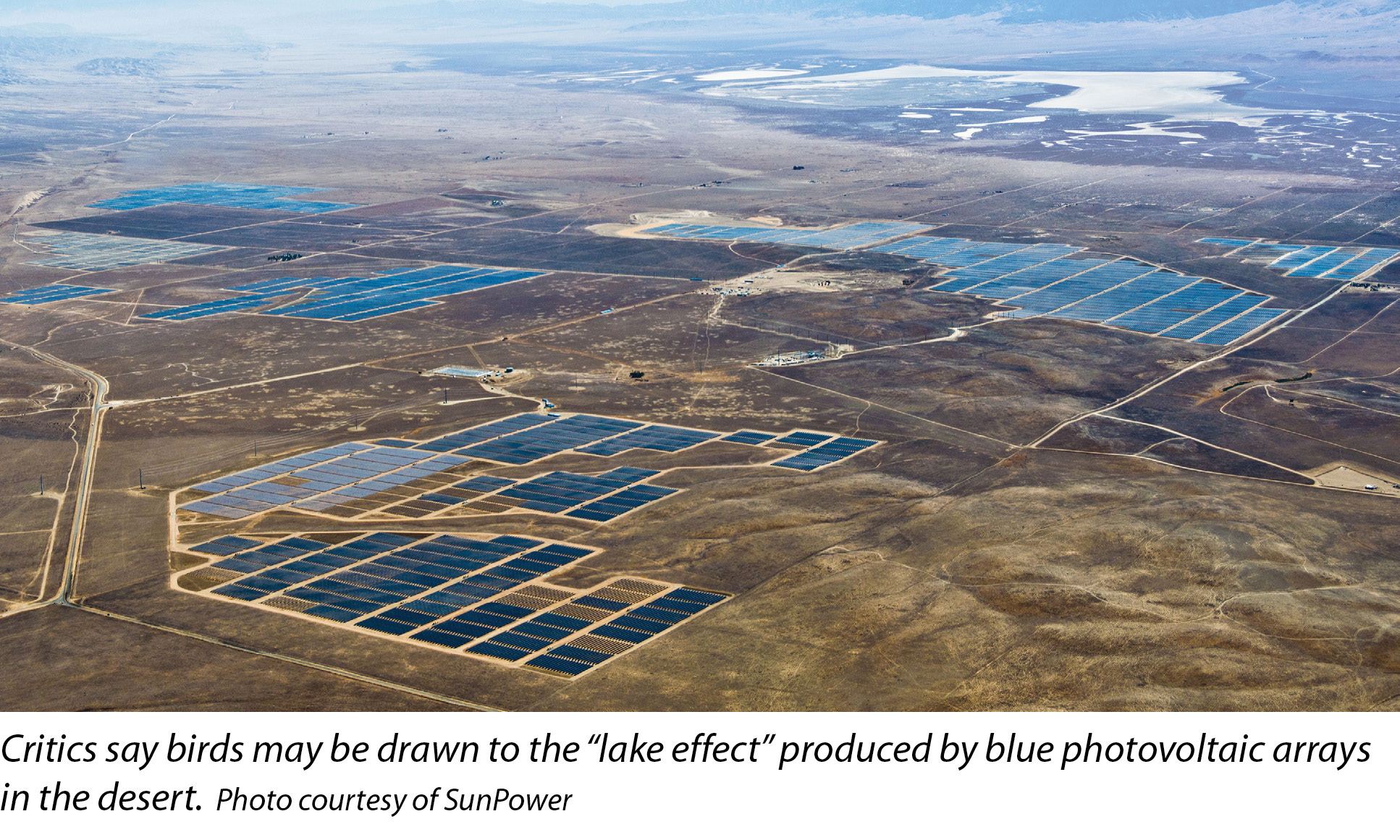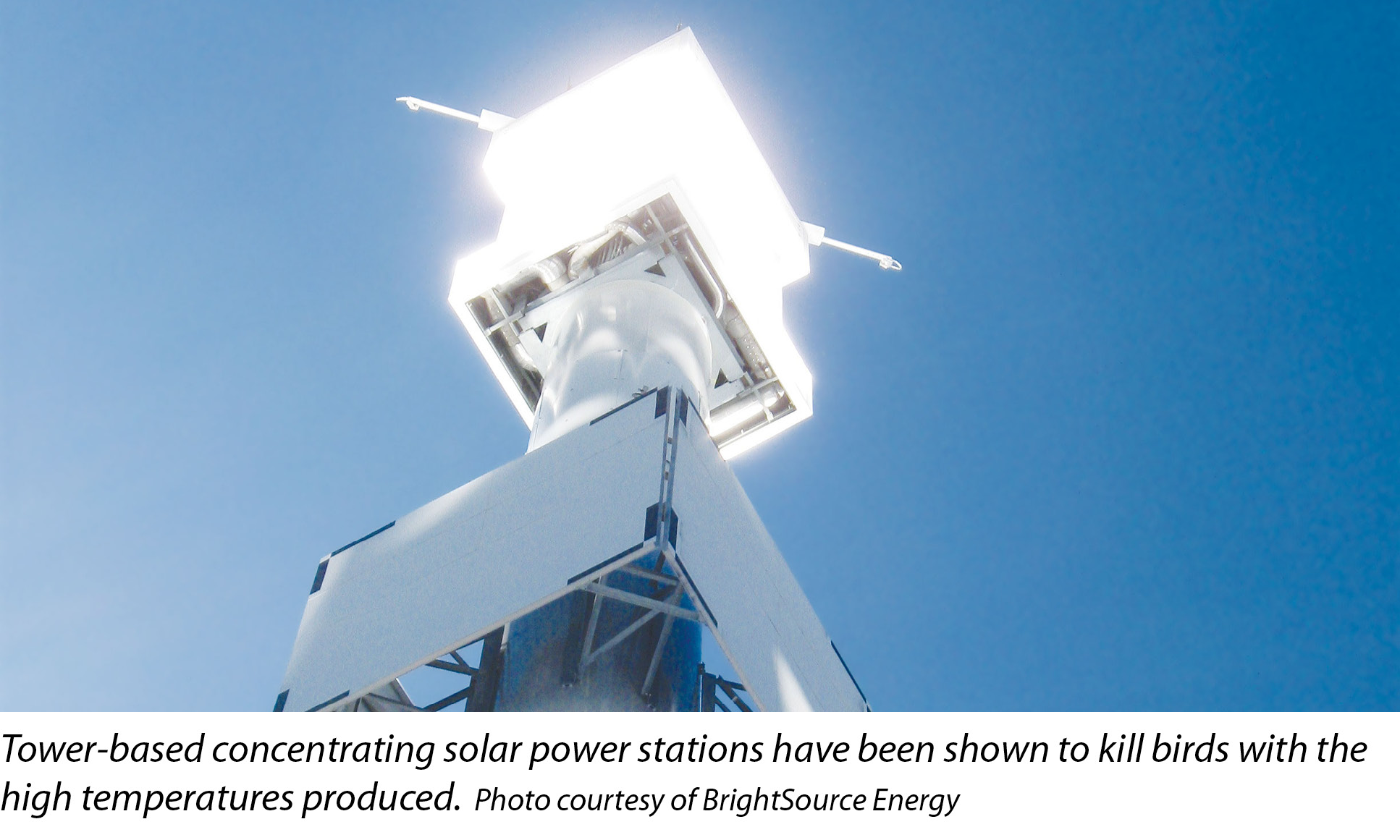

301 Moved Permanently
On May 26, the U.S. Fish and Wildlife Service (FWS) initiated an environmental review of a proposed permitting program for authorizing the incidental “take” of migratory birds protected by the Migratory Bird Treaty Act (MBTA).
The MBTA, first enacted in 1918, makes it a crime to “pursue, hunt, take, capture or kill”; to “attempt to take, capture or kill”; or to possess, sell, purchase or ship any migratory bird as well as any part, nest or egg of any of the thousand bird species the act protects. The only exception is if the take has been permitted by regulations adopted by the secretary of the U.S. Department of the Interior (DOI).
The DOI has adopted MBTA regulations that authorize hunting, various scientific and educational activities, handling by public agencies, and activities for controlling predatory or injurious birds. Regulations also exist for takes that occur as a result of military readiness activities.
However, there is no permit program for a take that occurs incidental to commercial or industrial activities. The FWS announcement, therefore, begins what will no doubt be a protracted and contentious rulemaking process, given the unusually broad scope of the proposal. Litigation is also likely.
The utility-scale solar sector should closely track these proceedings. As large-scale solar installations have come online in Southern California, the FWS has begun to pay close attention to their effects on avian species protected by the MBTA, whether by the “solar flux” at tower-based concentrating solar power installations or by the hypothesized “lake effect” at solar photovoltaic facilities.
Industry participation will be particularly important because the FWS has yet to develop a consistent approach for assessing the avian risks in the utility-scale solar sector - a circumstance that presents both risk and opportunity during the rulemaking process.
Solar implications
The FWS proposes, and seeks comment on, a three-pronged permitting framework.
The first prong would be a general, conditional authorization available to industry sectors that the FWS has historically engaged with to develop impact reduction measures. Sectors contemplated by the FWS include oil, gas and wastewater disposal pits; gas flares; communication towers; and transmission lines.
The second prong would require individual incidental take permits and site-specific National Environmental Policy Act (NEPA) reviews for activities that “present complexities or siting considerations that inherently require project-specific considerations or [those with] limited information regarding adverse effects.”
The third prong would authorize incidental take by federal agencies that enter into a memorandum of understanding (MOU) with the FWS. The FWS would consider the use of such MOUs to extend take authorization to private parties regulated under other federal rules.

The FWS also contemplates continued reliance on enforcement discretion, rather than a permitting program, for sectors that work with the agency to develop voluntary guidelines designed to assess a sector’s risk to avian populations and identify potential measures to avoid or reduce such risks. The agency says it is considering whether wind energy generation could be included in the general, conditional authorization framework by building on the Land-Based Wind Energy Guidelines that the FWS issued in 2012. But it is silent with regard to solar energy.
The present state of uncertainty over the avian effects of solar installations will shape the FWS’ MBTA strategy for the solar sector.
In April, Argonne National Laboratory and the National Renewable Energy Laboratory prepared a report summarizing the current state of knowledge regarding avian issues at utility-scale solar facilities. The report noted that detailed avian impact data has been collected at a handful of utility-scale solar projects, but it found that avian effects across the solar sector as a whole are uncertain due to the present lack of systematized data across projects. It also found that the development of a systematic, scientifically rigorous data collection program is needed to evaluate the extent and causes of avian mortality and to determine appropriate mitigation.
The FWS is likely to be influenced by this report as it contemplates applying the MBTA to solar facilities. One implication of the report’s conclusions is that the FWS may have difficulty benchmarking the solar sector against other causes of incidental bird mortality. This is important because the FWS has suggested that its permitting program could focus on sectors or activities that have a greater impact on migratory birds, leaving lesser causes of bird mortality to be addressed through enforcement discretion and potentially with industry-specific guidelines.
Although not suggested by the May 26 notice, one option the FWS could consider is a phased approach that begins with the development of standardized data-collection guidelines. Compliance with the guidelines could result in favorable enforcement discretion or perhaps exemption under an interim, general incidental take authorization rule. Such an approach could be quite simple at the outset, consisting of a standardized research protocol that would be refined as results develop from its implementation.
Once enough data has been generated to accurately define solar risks and risk reduction measures, the FWS could use that information to evaluate whether utility-scale solar installations present disproportionate risks relative to other sectors. It could also consider whether such risks warrant the commitment of additional resources required for a permitting program or whether the solar sector should remain among the industries whose migratory bird impacts are addressed through guidelines and enforcement discretion.
Such an approach would have the significant added benefit of conserving scarce administrative resources and avoiding the inherently un-systematized complications of a site-specific permitting regime, which would appear to be better suited to unique uses that do not fit easily into a broad-based, relatively homogenous industry sector, such as transmission, wind, oil and gas, or, for that matter, utility-scale solar.
Next steps
With its May 26 notice, the FWS has begun developing a proposal to more broadly regulate the incidental take of migratory birds. The notice begins a scoping process for a programmatic environmental impact statement (EIS). The FWS will be accepting scoping comments until July 27. A series of public events and webinars is also scheduled.
Once scoping is completed, the FWS will develop a draft EIS and issue it for public comment, presumably in conjunction with the release of a set of proposed regulations. The May 26 notice does not indicate the agency’s timeline for this effort, but it reportedly hopes to issue draft regulations this winter and have a final rule in place before the end of the Obama administration.
That may prove to be an overly optimistic schedule. The FWS issued a NEPA scoping notice in June 2014 for potential changes to the existing Bald and Golden Eagle Protection Act permitting program, but no NEPA document or proposed changes to the eagle permitting rules have yet emerged from that effort. Regulating the incidental take of migratory birds will likely prove even more complicated due to the broader range of activities and bird species involved.

New wine in an old bottle?
The MBTA is an almost 100-year-old statute designed to control poaching and commercial hunting. It does not offer the best raw material for fashioning an incidental take program that comports with modern conservation objectives.
An incidental take rule almost certainly will draw legal challenges, given the number of industries impacted. Those challenges will bring to a head the threshold question of whether the MBTA even applies to incidental take. Courts in the Tenth Circuit have agreed with the FWS that the MBTA is a strict liability statute triggered by bird deaths that incidentally result from otherwise lawful activity. The recent Duke and PacifiCorp wind project MBTA plea agreements originated in Wyoming, a Tenth Circuit state.
However, courts in the Eighth Circuit and Ninth Circuit have taken the opposite view, holding that the statute only applies to purposeful actions directed against migratory birds, such as hunting. The latter cases suggest a likely path for challenges to the legal underpinnings of any incidental take permitting rules.
In addition, an MBTA incidental take program faces practical constraints due to the vast array of human structures and activities that incidentally cause bird mortality. The FWS is aware of this problem, and it says it intends to focus on the activities and industries that chronically kill birds.
The agency also clearly seeks streamlined alternatives to individual permits through general permits that are akin to the U.S. Army Corps of Engineers’ nationwide Clean Water Act Section 404 permit program and other mechanisms similar to Section 7 consultation under the Endangered Species Act.
Another question is whether - and how - incidental take authorization applies to existing facilities. The Tenth Circuit has recognized the due process problem posed by enforcing the MBTA against those who were not on notice that their actions or equipment could kill birds. Applying new siting and design standards, or even new best management practices, to existing facilities could pose similar issues.
As mentioned above, the FWS contemplates not requiring permits for some causes of bird mortality and continuing its reliance on enforcement discretion. This remains viable even after a permit program is adopted because the MBTA has no citizen suit provision. However, it remains to be seen whether the FWS’ reliance on enforcement discretion would remain insulated from court review following the creation of a formal MBTA permitting program. S
Environmental Policy
Migratory Bird Policy Casts Shadow Over Large-Scale Solar
By Authot
The U.S. government’s proposed “incidental take” rule covering over a thousand species could affect solar projects in many regions.
si body si body i si body bi si body b
si depbio
- si bullets
si sh
si subhead
pullquote
si first graph
si sh no rule
si last graph